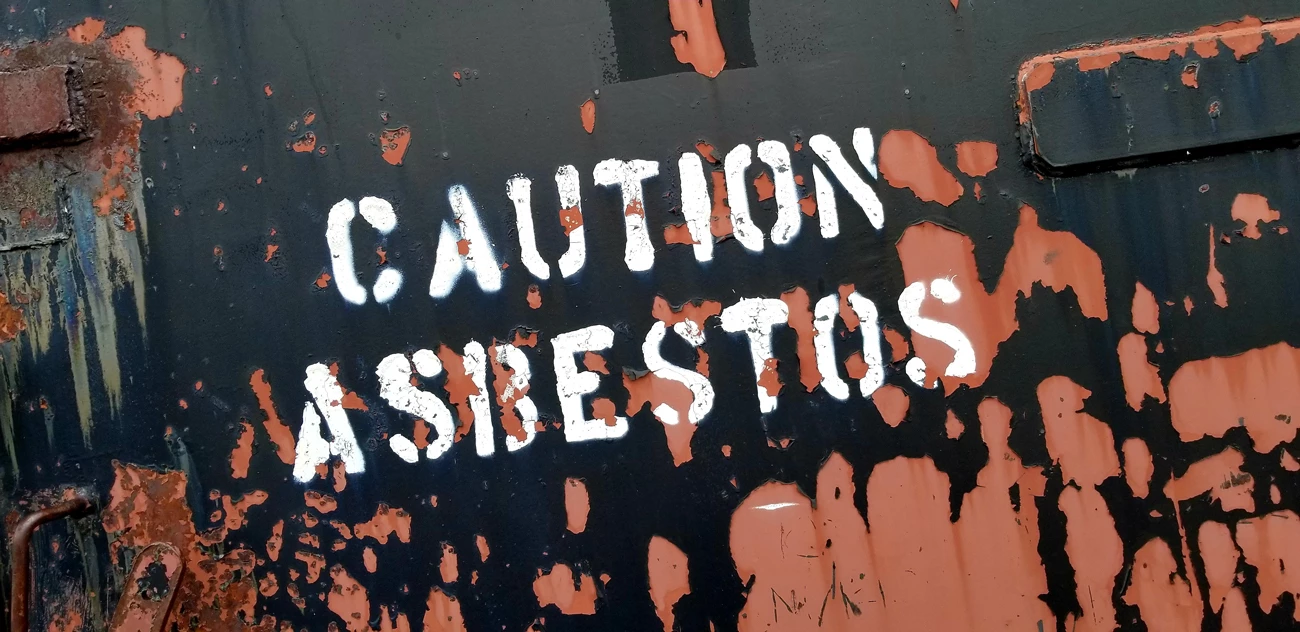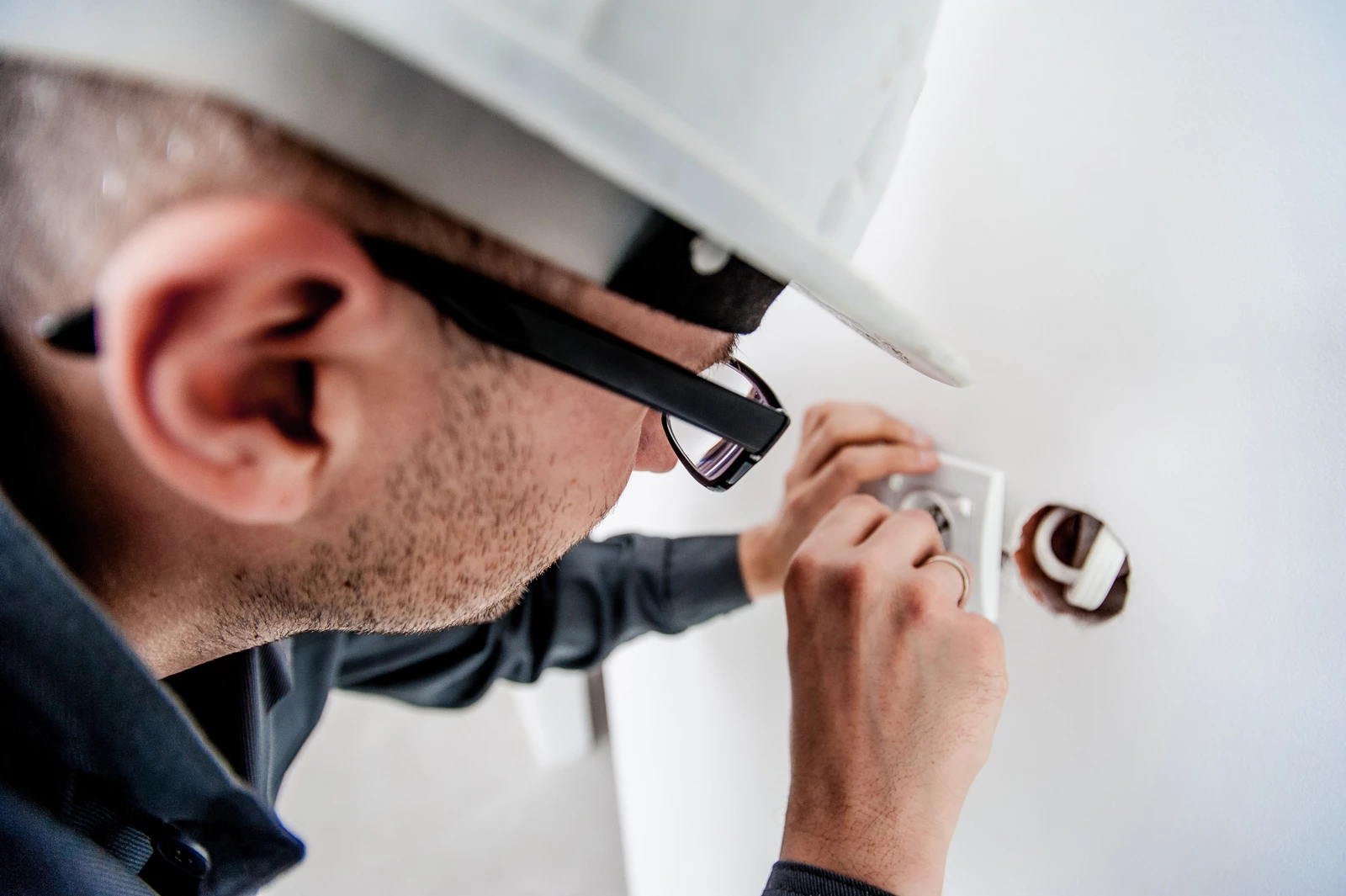06/01/2020 | Category: Commercial Insurance

Working as an electrician means exposing yourself to a number of risks. There’s always going to be an element of risk when dealing with electricity, but there are ways to manage those risks. However, one potentially life-threatening issue that might not be so apparent on the job is asbestos exposure.
It is estimated that electricians (or any tradespeople) come into contact with asbestos around 100 times every year. Often, the individual doesn’t even realise asbestos is present.
A report by the Health and Safety Executive (HSE) revealed that less than a third of tradespeople were aware of how to deal with and handle asbestos safely in the workplace. Are you one of them?
Here are 10 things every electrician should know about asbestos – and how to keep any risks to a minimum.
1 How dangerous is asbestos exposure?
According to data from HSE, asbestos kills around 5,000 tradespeople every year – that’s more than the number of people killed in road accidents. The figures also show that roughly 20 tradespeople die each week as a result of previous exposure.
More statistics, this time on the Asbestos Justice website, reveal that 1.3 million tradespeople are at risk from the dangers of asbestos. In short, asbestos exposure is extremely dangerous, which is why protecting yourself is so important.
That includes everything from wearing the right protective clothing to having comprehensive commercial insurance cover.
2 What are the health risks from asbestos?
If you damage or disturb any materials containing asbestos, ultra-fine fibres are released into the air. If you breathe in these fibres, they can cause serious illnesses. These diseases are not often apparent straight away, but once diagnosed are often extremely serious and in some cases, fatal.
Some of the diseases caused by asbestos exposure include:
· Mesothelioma: A cancer that affects the lining of the lungs and lower digestive tract. It is almost exclusively associated with asbestos exposure and once diagnosed, nearly always fatal.
· Asbestos-related lung cancer: Similar to lung cancer caused by smoking. There are around the same number of asbestos-related lung cancer deaths as there are mesothelioma deaths.
· Asbestosis: Scarring of the lung after heavy exposure, which causes shortness of breath and can lead to death.
· Pleural thickening: After heavy asbestos exposure, the lining of the lung can thicken and swell causing shortness of breath and discomfort.
3 Where can I find asbestos?
Asbestos is not just a problem in old buildings, it can be present in any building that was built or refurbished up until the year 2000.
Asbestos can be found in many materials commonly used in the building trade, such as lagging, sprayed coatings, insulating board, floor tiles, roofing felt and rope seals.
4 What products may contain asbestos?
Lots of products commonly used by electricians, and made before 1999, contained asbestos. Some of the items you need to be aware of include: thermal paper; electrical cloth; electric wiring insulation; cement siding; textured paints; decorative plaster, electrical panels and partitions; electrical ducts; cement wallboards; fuse boxes (eg flash pads); and electrical switchgear.
5 When am I most at risk?
According to guidelines issued by the HSE, you are most at risk of asbestos exposure when:
· A building was built before 2000
· The site is unfamiliar
· Asbestos was not identified before the job started
· No risk assessment has been carried out
· Asbestos training has not been given
· You (or those around you) don’t follow proper precautions
6 How do I know if asbestos is present?
Before starting work, it is essential that you (or someone else) checks if asbestos is present.
In commercial buildings there should be a document you can refer to that will give details of where any asbestos is present and the condition it is in.
If no such document is available, you must assume asbestos is present in any material you need to disturb and take the necessary precautions.
7 How can I deal with asbestos safely?
The first thing to do is decide if it’s possible to carry out the electrical work and avoid the risk of asbestos exposure completely. If that is not possible, identify if you are at risk and the level of risk. From there, you can decide what is needed in order to manage those risks effectively.
Safety equipment can help mitigate those risks and includes: overalls; single-use disposable gloves; disposable overshoes; and respiratory protective equipment.
8 How can I minimise the risks?
There are a number of things you can do to minimise the risk of asbestos exposure and complete an electrical job safely. These are:
· Control the amount of asbestos dust
· Wear the appropriate disposable personal protective equipment
· Don’t take work clothes home
· Use hand-tools to reduce the amount of dust
· Wear a protective mask (FFP3)
· Don’t eat, drink or smoke in the immediate work area
· Don’t sweep up dust or debris
9 What should I do if I think I’ve inadvertently been exposed to asbestos?
If you think you may have been inadvertently exposed to asbestos, you will feel anxious. However, most cases of short-term, inadvertent asbestos exposure does not lead to long-term ill health effects.
It is hard to determine the level of exposure – and thus the level of risk – but if you are concerned, you should speak with your GP. They will be able to add a note in your medical records detailing possible exposure (such as date, duration, type of asbestos and potential exposure levels).
10 What are the key facts to remember?
When it comes to working where asbestos is (or could be) present, you can never be too cautious. Here are a few things to bear in mind the next time you are on a job:
· You can’t see or smell asbestos fibres
· The effects of asbestos inhalation take years to show up
· If you smoke and are exposed to asbestos, you are at greater risk
· Asbestos is only a danger when inhaled
· If the asbestos is in good condition and located somewhere that is unlikely to be damaged, it shouldn’t pose a risk
At Insurance Choice, we are here to protect electricians and tradesperson from risks they face on the job. We can arrange commercial insurance that is tailored to meet your needs.
Get in touch to find commercial insurance cover that suits you.
